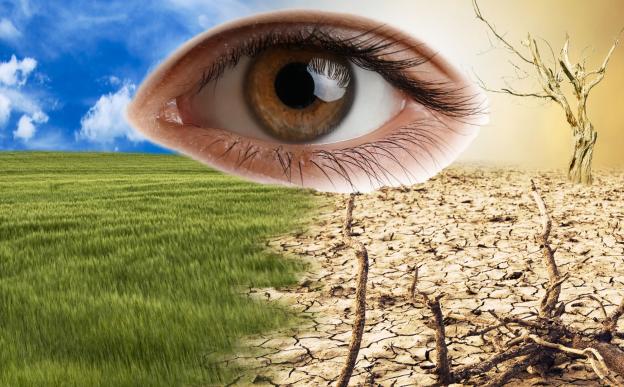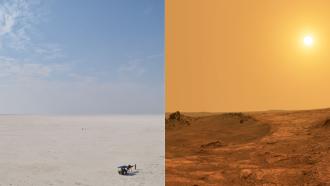
In a new study, researchers from the Indian Institute of Technology (IIT) Kharagpur have uncovered a worrying trend across India: a significant rise in ecological droughts, a severe form of moisture stress that threatens the country's fragile ecosystems, pristine forests, and vital croplands. This phenomenon, which has been largely unexplored in India until now, is driven by a complex interplay of changing monsoon patterns, global ocean warming, and increasing human interventions. The research is based on an extensive analysis of remote sensing data and machine learning techniques spanning the 2000 to 2019 period. It reveals that these long-term droughts pose a potent threat to India’s sustainability, food security, and efforts to mitigate climate change.
The study shows that ecological droughts are increasing in ecologically sensitive areas, particularly the forests of the Himalayas, the Northeast (NE), Central India (CI), and the croplands of the eastern Indo-Gangetic Plain (IGP) and southern India (SI). These regions are now experiencing a decline in vegetation health, a process the researchers term browning, which directly impacts the health and functioning of terrestrial ecosystems. The study identifies two primary, non-linear drivers for this crisis: dryness caused by a deficit in rainfall, called meteorological aridity and ocean warming. Using a Random Forest machine learning model, the team quantified meteorological aridity as the most significant contributor to vegetation stress at 23.9%, closely followed by sea surface temperature (SST), a proxy for ocean warming, at 18.2%.
Did You Know? Droughts are projected to impact around 40% of the world's population by the year 2030, making them one of the most hazardous extreme events. |
To understand how this crisis was discovered, it is essential to first grasp what an ecological drought is and how the researchers tracked it. Unlike conventional meteorological droughts (a deficit in precipitation) or agricultural droughts (insufficient soil moisture for crops), ecological drought is a prolonged period of water deficit that leads to fundamental, long-term changes in ecological conditions, including ecosystem structure, biodiversity, and functioning. These droughts have long-term ramifications, lasting multiple years, unlike the seasonal nature of agricultural droughts.
The researchers used remote sensing to monitor the health of India's vegetation during the critical Indian Summer Monsoon (ISM) season (June to September). They employed a key metric called the Vegetation Health Index (VHI), which is a highly efficient indicator of ecosystem health and crop yield. The VHI is calculated by combining two components: the Vegetation Condition Index (VCI), which measures vegetation vigour, and the Temperature Condition Index (TCI), which measures temperature-induced stress. By tracking the VHI, VCI, and TCI over the two decades, the team could pinpoint regions where vegetation health was declining (VHI below 0.4) and thus vulnerable to ecological droughts. They found that forests in the western Himalaya and croplands in the Northwest and Southern India are the most vulnerable.
Their analysis of the causes revealed that ocean warming does not directly cause the droughts, but rather indirectly triggers them. The mechanism works like this: the Indian Ocean Warm Pool (IOWP), a very warm area of the ocean, has been intensifying and expanding westward in recent decades. This warmer ocean transfers heat to the land, which increases land temperature and atmospheric aridity. This enhanced heat and aridity then deplete soil moisture (SM) and trigger the ecological droughts, leading to vegetation stress and browning. Furthermore, the study found that large-scale climate oscillations, such as El Niño (positive Oceanic Niño Index, ONI) and the negative phase of the Indian Ocean Dipole (nIOD), are strongly associated with years of negative VHI anomaly and ecological droughts.
Beyond the climate drivers, the study also highlights the role of human intervention. The rising ecological droughts are occurring predominantly in forests that exhibit large human modifications and low forest integrity, such as in the Western Ghats, Northeast, and Central India. The increasing human population and associated activities, including traditional agriculture and land-use changes, are leading to forest degradation and fragmentation, which further perturb the regional moisture recycling and make ecosystems more vulnerable to aridity and browning.
The study provides a crucial new perspective by defining and analysing ecological droughts, their drivers, and mechanisms across India. With millions of people dependent on agriculture and forest-based ecosystem goods and services, the rising ecological droughts pose a serious concern for environmental sustainability and food security. It is now imperative to integrate the ecological repercussions of droughts into policy-making and combat their threats. By understanding the complex links between the atmosphere, land, and ocean, India can better plan for mitigation and adaptation to the adverse impacts of droughts on its vital ecosystems.
This article was written with the help of generative AI and edited by an editor at Research Matters.






